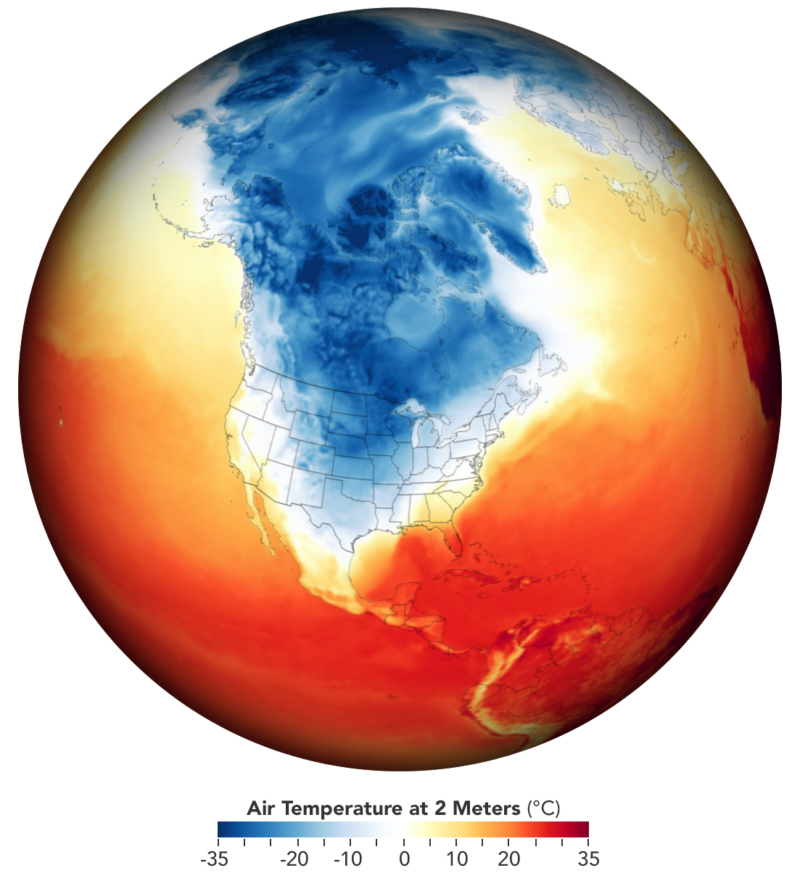
Some songs are earworms—catchy whether you like them or not. (I won’t infect the rest of your day with an example.) Some explanations in science seem to be the earworm equivalent: inherently intuitive, making them stick readily in the mind. That’s obviously the case for the hypothesis that a warming Arctic leads to a wigglier jet stream, producing weather extremes in the mid-latitudes like the recent epic cold snap in the central US.
The cold arrived after the spinning “polar vortex” in the upper atmosphere above the Arctic was disturbed in January, unleashing its contents southward as the jet stream detoured from its usual commute. Could this behavior actually be a consequence of global warming? The suggestion has appeared in news articles and Twitter threads across the land. But the idea is stickier than the science says it should be.
Jet setting
Although the specifics vary, the general idea is based on the fact that the Arctic is warming faster than the midlatitudes. As a result, the temperature difference between them is getting a little smaller. The jet stream forms at the boundary between the Arctic and midlatitude air, so a smaller temperature difference would weaken the jet stream. And a weaker jet stream is more prone to great, wiggling meanders that can bring you cold air from the north or warm air from the south.
No comments:
Post a Comment